Michael Cimino’s last feature, “The Sunchaser,” was released in 1996, twenty years before his death, on July 2nd, at the age of seventy-seven. His first film, “Thunderbolt and Lightfoot,” came out in 1974. In the seven features made during his all-too-brief directorial career, a certain kind of male character recurs. The Cimino Man is strong-willed and ruthless in his quest for power, which he puts in the service of those who don’t have power and are the victims of the powerful. He’s not Superman—not invulnerable, and not endowed with anything but some natural talent, some audacity, and some practical intelligence—but he’s fiercely principled, and his devotion to his principles lends him an extra measure of efficacy. This man even manages to help—sort of—but his actions, for all their good intentions, result in a trail of tears, of corpses, and of physical and emotional wreckage that will burden him for the rest of his life.
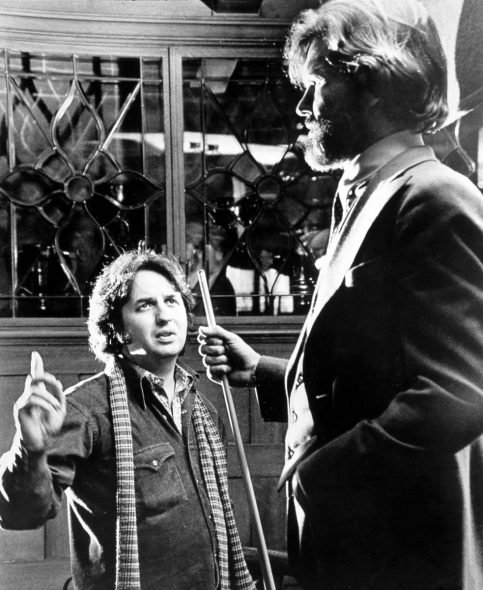
PHOTOGRAPH BY MARY EVANS / RONALD GRANT / EVERETT
Cimino’s life work is a cinema of mourning, an art of grief, a nightmare of memory that finds its sole redemption in ecstasy—the heightened perception that transforms experience into a grand internal spectacle, which finds its embodiment in Cimino’s own profound visual imagination. Of the American directors of so-called New Hollywood, Cimino was by far the most visually gifted. His films don’t have the deep historical layering or the self-punishing energy of Martin Scorsese’s work, or the operatic rhetoric of Francis Ford Coppola’s. They don’t have the referential wit, or the vanity, for that matter, of Brian De Palma’s virtuosic compositions. Cimino’s mighty and distinctive visual imagination is more than a way of presenting the action in his films; it’s the very source of his dramas. He is, in effect, a documentary filmmaker whose overwhelming sense of confectionery artifice—of screen-crowding and mind-catching detail, of choreographic turbulence and sculptural majesty—depends on his creation of a densely populated, deeply conceived, and meticulously realized world.
That’s how he got in trouble on “Heaven’s Gate”: his control of locations, performances, and sets was fanatical (the anecdotes are legion and widely anthologized). Isabelle Huppert, who was interviewed in the French dailyLibération after Cimino’s death (in the interest of full disclosure, I was, too),described Cimino’s working methods during the extended shoot:
“The shoot was supposed to last two months; it became a seven-month odyssey. In April, the day after I arrived, I shot a scene in which I cried a lot. Then nothing until June. We weren’t sitting around doing nothing—we were training every day at dancing the waltz, using a gun, doing roller skating, driving a carriage. It was like sleepaway camp.”
The result was a unique art of the intimate within the colossal, the sort of monumental pointillism that had its closest prior likeness in Jacques Tati’s “Playtime.” It was a distinctive fusion of the free-flowingly uninhibited and spontaneous amid the precisely calculated, of the sort that hadn’t been seen since Charlie Chaplin’s days. When “Heaven’s Gate” was restored and revived, in 2012, I wrote about the experience of watching it again, about its original cinematic modernity, and about its rejection by critics at the time of its release. In short, it’s the kind of mighty masterwork that was doomed to be misunderstood in its time and that has come to be appreciated belatedly.
“Heaven’s Gate” wasn’t a film of New Hollywood; it was in part a film of Old Hollywood and in part a film of the distant future. Cimino drew on a strain of myth that was the stock-in-trade of classic movies and transfigured it with an aesthetic that was decades ahead of its time. (The director Josh Safdie recently offered an example of its currency in an interview in Filmmaker magazine: “The way we basically build fiction films is we try to create a reality that we document.”) Happily, Cimino lived to see its long-overdue reëvaluation, though it’s hard to imagine the burden of public opprobrium he endured in the meantime, for what was long considered one of the most misbegotten movies ever.
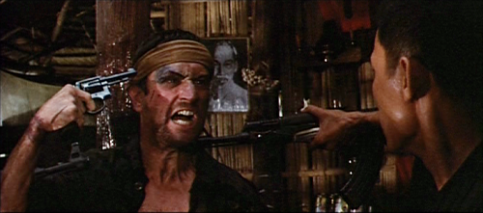
What enabled Cimino to make “Heaven’s Gate” was the success of his second feature, “The Deer Hunter.” Yet the success of “The Deer Hunter” and the critical and commercial failure of “Heaven’s Gate” are two sides of the same coin. Despite the thematic connections between the two films, their stylistic and tonal differences are drastic. “The Deer Hunter” is the least visually distinguished of Cimino’s films (and that includes his mainly workmanlike remake of “The Desperate Hours,” from 1990), the one that’s most dominated by his script and by the showily earnest, quasi-Methodical, white-heat performances of its stars. It’s also Cimino’s least observational film, and the one in which his intentions and his editorializing show through a scrim of on-location realization that’s too thin. It’s the least of Cimino’s films, the one in which he does least what he alone does best.
“The Deer Hunter” shows American virtues and American vices, the savior-like impulses that led to a foolish and doomed war and that also lead its warriors to acts of heroism in that war, as being united and inseparable—and it links both to one particular passionately bonded yet closed-off ethnic community of white working-class immigrants who, by implication, are deluded, abused, and betrayed by the country’s power-wielding élites. Its protagonist, Michael Vronsky (Robert De Niro), a steel worker in western Pennsylvania and part of a tight-knit community of Russian descent, and two friends, Nick (Christopher Walken) and Steven (John Savage), volunteer to fight in the Vietnam War, and each is destroyed by it. In Vronsky’s case, his destruction is moral: he has come to see the world of his patriotic heritage as a façade, a lie; he will live tortured not only by what he has witnessed but also by what he has come to understand, tormented by the force of cynicism, hypocrisy, and self-doubt. The film won a truckload of Oscars (including for Best Picture and Best Director), and I think that they were all delivered for the final scene, a group rendition (led by Meryl Streep) of “God Bless America,” which papers over the torment with a seemingly patriotic affirmation that is actually biliously ironic. Hollywood, however, clung to that veneer, during the late nineteen-seventies, as to a life raft.
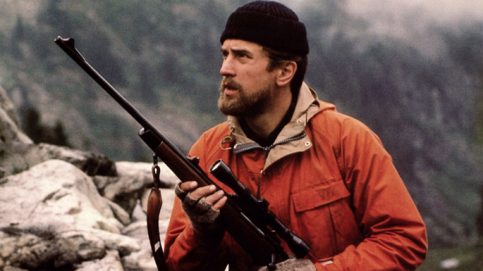
Despite its commercial success and widespread acclaim, “The Deer Hunter” was also widely criticized at the time for its depiction of compulsory games of Russian roulette imposed on American and South Vietnamese prisoners of war by their Viet Cong captors—something that did not, in fact, happen. Critics were wrong to take Cimino to task for this fabrication. His point was simple enough: it was hell to be a prisoner of war, both on the body and on the mind, and the game of Russian roulette is an effective dramatic device to show as much. The movie’s subject is a disease of violence that feeds on itself, that’s inseparable from American national identity and self-image—and that offered a choice between careening toward even worse and facing a crisis of this very identity. Yet “The Deer Hunter” merely knocked on the exterior of that ambient mythology.
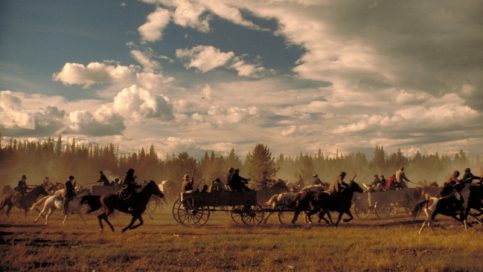
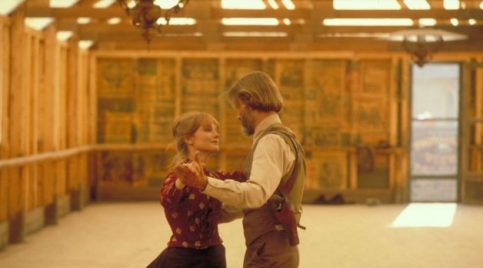
In “Heaven’s Gate,” Cimino showed what he could do, how fully he could realize that mythology and how deeply he could probe it, and he paid the price with his career. To show the kind of collateral damage left by his colossal efforts, there’s no need to go further than the pages of The New Yorker, where, in December, 1980, at the time of the film’s release, Pauline Kael wrote that its star, Kris Kristofferson, “seems groggy from the effort to act…. (When he speaks, his eyes are far away; he seems to be trying to read a teleprompter across the river.)” She added that the movie’s co-star, John Hurt, “wanders through, tossing his russet locks, addressing cultivated ironic thoughts to the clouds, and giving a performance that is so masochistically rotten that Charles Laughton in his Heaven/Hell must be weeping with envy.” Several weeks later, Hurt received a Best Actor nomination for his role in David Lynch’s “The Elephant Man”; he didn’t win, but his career, centered in his native England, continued unabated. Kristofferson, however, whose performance is laconic, ironic, coolly but mightily mythic—the modern cinema’s closest approximation to a performance by Robert Mitchum or even John Wayne—won the art-house award of collaboration with the great Alan Rudolph (whose “Trouble in Mind” he invests with another classic performance), but never again rose to the level of prominence that he had held in the nineteen-seventies.
Mickey Rourke, who had a small but memorable role in “Heaven’s Gate,” starred in Cimino’s next film, “Year of the Dragon,” from 1985. If there had been no “Heaven’s Gate,” “Year of the Dragon” (which Cimino and Oliver Stone co-wrote) would have played like a gonzo police story magnified into spectacular melodrama rather than derided as a reprise of “Heaven’s Gate.” Its proximate subject is a lone police detective, Stanley White (Rourke), who single-handedly challenges the dynamic and brazen young crime boss (John Lone) of New York’s Chinatown. Its premise is the “arrangement,” the compromise of government and business with mobsters so that a simulacrum of order can be maintained. But the victims of that compromise are ordinary residents, mainly immigrants without much official standing, who are left without recourse as the victims of tacit agreements between crime bosses who profit from their labor and the city’s powers-that-be.
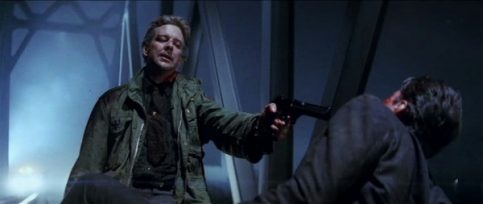
Stanley’s no angel: he’s a vigilante on the inside, who acts outside the law when the law does a poor job of taking on miscreants. He’s imprudently obsessed with his work, and those closest to him pay a horrific price for his tunnel vision. A descendant of Polish immigrants, a city-dweller with no frontier, he carries an invisible burden (one that’s merely suggested by his frequent references to his traumatizing experiences in the Vietnam War). Cimino’s depiction of city life is turbulent and vital yet hive-like; he brings the same obsessive fascination with detail to his re-creation of New York (which was actually done on a North Carolina backlot). The movie’s swing and energy are dubious, offering a mere gloss of normalcy to the frustrations and injustices, the backroom deals and sub rosa violence of daily life.
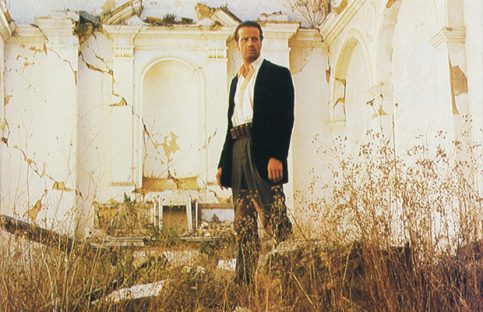
“The Sicilian,” from 1987—adapted from a novel by Mario Puzo—stands “Year of the Dragon” on its head. It’s the story of Salvatore Giuliano (Christopher Lambert), a Robin Hood-like bandit who became a folk hero in the immediate postwar years, and who was killed in 1950. Cimino looks even further behind the curtain of power to see and hear the manipulations and negotiations that unified the government, the police, the Catholic Church, the Mafia, the aristocracy, and even the university in maintaining an order that was unjust and oppressive to the poor—and that created an environment in which a bandit with an unrepressed and brazen bloodlust could become a folk hero. Lambert, as Giuliano, is something of a cipher, which fits Cimino’s paradoxical schema—the supporting characters, played by John Turturro, Terence Stamp, Joss Ackland, Barbara Sukowa, Richard Bauer, and Giulia Boschi, are far more vivid. Cimino doesn’t stint on the Western analogies, with horses and mountains and conflicts over land rights, and his image repertory is as vital and energetic as ever, but it’s hard not to see a crisis of cinematic faith, a sense of narrowing possibilities, afflicting the film. The pageantry of a Communist march with red flags in the wilderness, the ancient clutter of a nobleman’s study, the haunting mystery of streetlights through a car’s rear window all ring with Cimino’s enthusiastic inspiration, but the movie seems like a substitute for the director’s visions at his most uninhibited. It plays mostly like a feature-length analogy, a sort of intellectual behind-the-scenes laboratory for another vast American movie that he couldn’t have made at the time.
Cimino’s 1990 film “Desperate Hours”—a remake of a 1955 drama starring Humphrey Bogart—is the story of a trio of criminals, headed by an escaped convict (Mickey Rourke), who take a suburban family hostage. It’s also, ultimately, the story of a decorated Vietnam War veteran (Anthony Hopkins) who is able to use his fighting skills to help protect his family, the story of a suburban milquetoast with delusions of grandeur who reawakens his long-dormant inner Rambo. The movie is as constrained by its largely domestic (and largely interior) setting as by its blatant commercialism; it’s the film of a director working much of the time with a hand tied behind his back. Yet its outdoor scenes and its scenes of escape, set in distant, rugged, and rhapsodic terrain, suggest that the illicit thrill of the outlaw life is an inescapable but doomed element of the American dream—and that this thrill is inextricable even from apparently sedate middle-class comforts, that the lure of death in the wild and of life in the suburbs isn’t as different as it seems.
Though Cimino’s films were centered on versions of the Cimino Man, they also began to veer in the direction of a Cimino Woman, and “Desperate Hours” suggests where they might have led had his career continued unabated. It’s in part a cherchez la femme story of a high-powered lawyer (Kelly Lynch) who’s in love with a violent man; in part a story of a suburban woman (Mimi Rogers) who takes no shit from her philandering husband; in part a story of a tough-minded teen-age girl (Shawnee Smith) who doesn’t hide her contempt for her captors; and in part a story of a bold and brilliant F.B.I. agent (Lindsay Crouse) who’s a hero confronting a crisis of moral authority.
Cimino’s aestheticism overrides moral judgment; his visual music turns even bad times and evil doings into aspects of beauty, a sort of existential contemplation of universal wonders. The terror of beauty, the destruction at the heart of ecstasy, is the very core of Cimino’s art. Yet, in his last film, he offered a relatively schematic drama that nonetheless probed and challenged his personal artistic mythology. In “The Sunchaser,” Woody Harrelson plays a man whose life is turned upside-down by a devotion he couldn’t refuse. His character, Dr. Michael Reynolds, a Los Angeles oncologist of great talent, great success, and great swagger, treats a patient whom his colleagues reject—a mortally ill sixteen-year-old prisoner named Brandon Monroe, nicknamed Blue (played by Jon Seda). Breaking out of the ward and taking Michael hostage, Blue, who is half-Navajo, forces the doctor to help him reach a mystical mountain in Arizona where a Native American shaman lives. En route, Michael—despite his skepticism and resistance—ultimately endures physical punishment and takes great risks to help Blue reach his destination. (A fast-talking backroads professor with a metaphysical streak, played by Anne Bancroft, has a crucial role in the doctor’s consciousness-raising.) Forgive the spoilers, but Blue dies and Michael, a wanted man, loses his reputation, his job, and his freedom—but, there in the valleys and the mountains, both had a visionary experience.
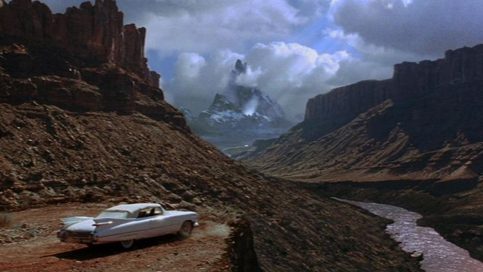
Blue, raised in a tough, poor, dilapidated neighborhood and incarcerated at thirteen, wants something more than his freedom—he wants a moment of ecstasy, of true beauty, before he dies. The site of his inner liberation turns out to be in the vicinity of Monument Valley, the iconic landscape of classic Westerns. Blue approaches myths of the West in terms of his own heritage as a Native American, as a land not of conquest and violence but of lost peace and spiritual unity. For Michael, the very same landscape is one of turmoil, lost illusions, and physical endurance. That difference is the very story of the film; with his last feature, Cimino went back beyond the mythology of America’s European immigrants to seek an alternative to modern American madness.
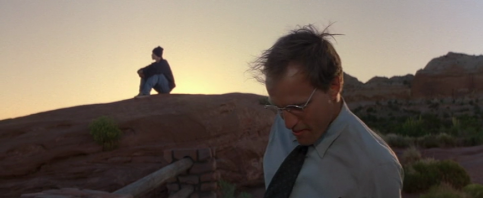
The last image in “The Sunchaser,” of Michael welcomed home and handcuffed, captures the contradictions that tormented Cimino from the beginning. His gleefully eccentric directorial début, “Thunderbolt and Lightfoot”—a frenetic road movie, crime story, and proto-bromance starring Clint Eastwood as a bank robber gone undercover, and Jeff Bridges, as a free-spirited young drifter whom he lures into a life of crime—filled the Montana landscape with the delusion of outlaw freedom and ended with a symphony of destruction that turned the open road into a blank vista of no exit. From that first movie to his last, Cimino erected and demolished myths, exalted and rued visions, embraced and decried national passions in the same cinematic gesture. Cimino’s romantic loner is also a killer and a loser, a shapeshifter whose transformations can’t dispel the demons of memory and the mounting burden of loss. From the start of his career, Cimino filmed in the future anterior tense: looking ineffably far ahead, he was already looking back in horror, and a cursed solitude would be his prophetic burden. I’m impatient to read a good and ample Cimino biography; the story of his endurance as a pariah would be one for the ages. He and Elaine May—whose 1987 masterwork “Ishtar” endured a similar critical drubbing—are cinematic heroes and martyrs of critical obliviousness.
,

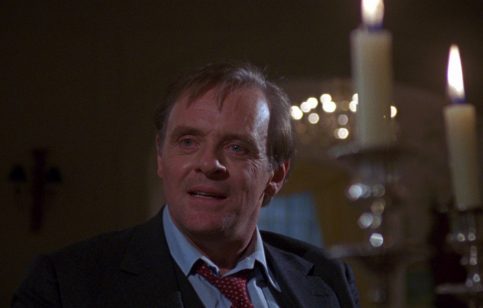
You must be logged in to post a comment Login